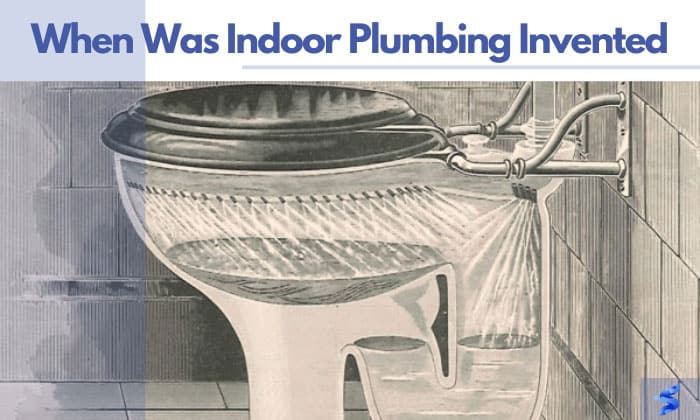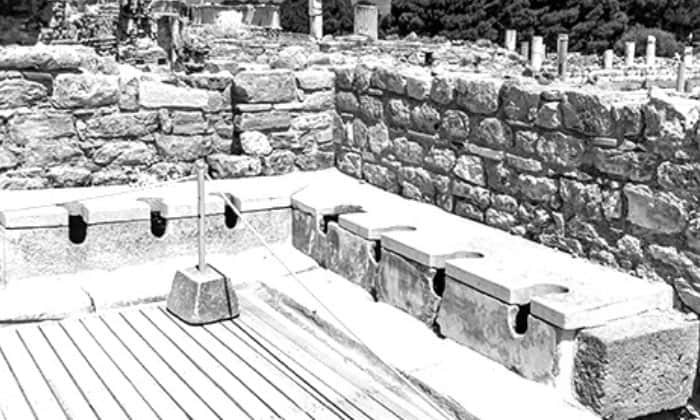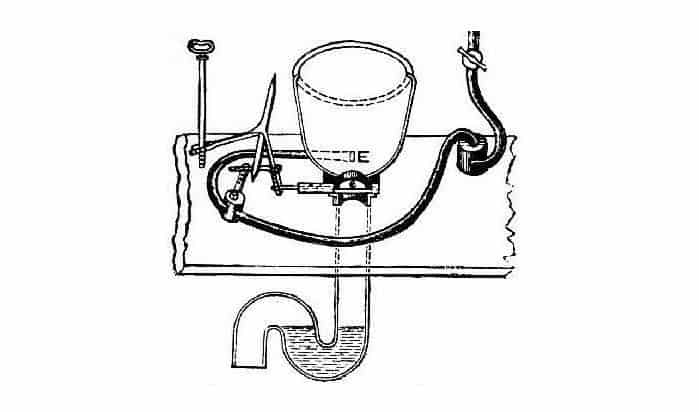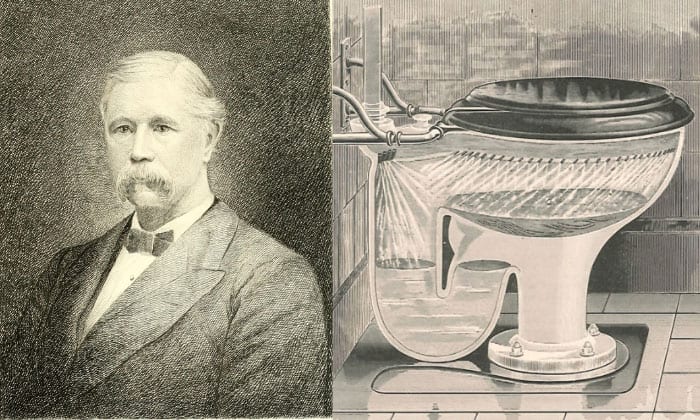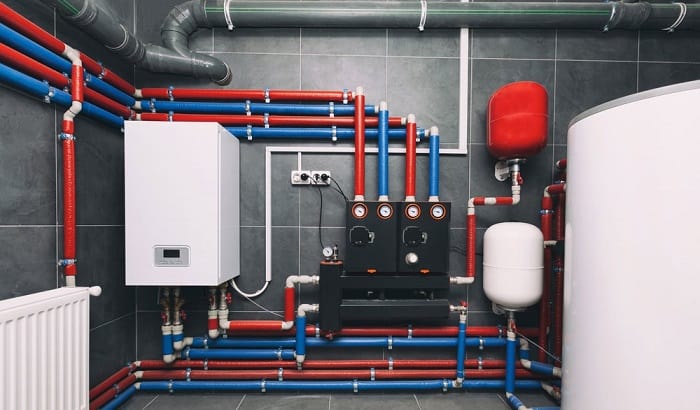Did it ever cross your mind: when was indoor plumbing invented? What year were toilets, water tanks, and waste pipes first utilized in unison — inside establishments?
No single person can be solely credited for this invention. General plumbing and flushing toilets were already recorded as far back as thousands of years ago. And their existence is more of a series of great minds and greater innovations rather than a single invention.
But the most renowned account was in 1829 when an architect by the name of Isaiah Rogers designed what’s considered to be the first elaborate system for water supply and sewage exit.
Because of this, it is widely recognized that indoor plumbing start in The Tremont Hotel, in Boston, with Rogers’ plumbing design.
From here, further improvements, replications, and popularization of various indoor plumbing designs took place and modernized the way we use bathrooms.
Table of Contents
History and Timeline
As mentioned, no single person can be credited solely for the indoor plumbing invention – not even Isaiah Rogers and his plumbing system at Tremont Hotel.
Rather, the continuous innovations and developments in the field are what brought us the efficient and modern toilet, plumbing, and sewer system we know today.
Here are some of the most significant milestones and developments in indoor plumbing history:
- 4000 – 3000 B.C. – Development and use of the first water pipes in the Indus River Valley, in India. Basically, running water was invented and used first here.
- 1500 – 1000 B.C. – Ancient civilizations in Crete and Egypt established complex underground drainage systems and plumbing fixtures.
- 500 BC to 455 A.D – The Roman Empire used an extensive plumbing system to deliver fresh and sewage water.
- 1596 – Sir John Harrington developed his own flushing water closet and installed one for his home and one in Richmond Palace for Queen Elizabeth I. This signified plumbing’s start in Europe.
- 1767 – William Feetham developed the first mechanical shower. This works by using a pump to suck up water and a chain to release it.
- 1775 – Alexander Cumming invented the ‘s trap,’ which has an S-shaped pipe and an air filter to keep sewage air out. The patent for the flushing toilet was also given to him by the United States Patent and Trademark Office.
- 1810 – Introduction of the English Regency shower which features nozzle pump and water collection methods.
- 1829 – Isaiah Rogers installed eight water closets at The Tremont Hotel in Boston, which is widely considered as the first indoor plumbing system.
- 1833 – The White House received running water on its first floor using indoor plumbing.
- 1848 – Implementation of the English Public Health Code as the standard guide for indoor plumbing.
- 1870 – Thomas William Twyford created the first one-piece, ceramic toilet.
- 1875 to 1925 – Indoor toilets become more common and not just exclusive to the ultrarich.
- 1880s – The chain-pull toilet was invented in England.
- 1885 – E.S. Chesbrough started America’s first comprehensive and fully functional sewer system in Chicago.
- 1890 – Thomas Crapper developed a valve-and-siphon design, which he eventually patented – which helped fill toilet tanks more effectively.
- 1906 – William Elvis Sloan developed the Flushometer – a method for a faster cycle time of toilet flushes still used in public restrooms today.
- 1910 – The first take on the modern toilet was made. It has similar features to today’s toilet with its elevated tank, bowl, and lid.
- 1920s – Following the development of the modern toilet, the demand for better plumbing systems in rural areas started in 1918
- 1940 – Indoor plumbing became well-established. Almost half of all households have piped water sources, bathtubs, showers, or toilets with flush.
- 1966 – Use of plastic pipes became popular.
This indoor plumbing timeline showed us what developments transpired with the intricate plumbing system over the past few millennia.
All these great minds, and their even greater inventions, contributed to the advancements in water supplying, indoor plumbing, and sewage handling we currently enjoy.
How Does the First Indoor Plumbing System Work?
The installation of water closets at Tremont Hotel is regarded as the first elaborate indoor plumbing system. It boasts water closets, storage tanks, and gas furnaces in its everyday operations.
Water supplied to the whole establishment came from the metal storage tank on the hotel’s rooftop, which was paired with a steam pump.
Who Invented Indoor Plumbing?
Isaiah Rogers is the architect who created plumbing system for indoor use – the first of its kind – installed at the Tremont Hotel. This is the most well-known indoor plumbing design in early history.
But as mentioned, Rogers cannot be credited as the sole inventor of plumbing. Toilets, sewers, and plumbing have a rich history of innovations and developments dating back from ancient civilizations up until now.
Nonetheless, Rogers’ breakthrough design is one of the most significant events that enabled other inventors to push plumbing and sewer systems toward modernization.
When Did Indoor Plumbing Become Popular?
Indoor toilets and plumbing came to popularity at around the last quarter of the 19th century until the first quarter of the 20th.
At this point, indoor plumbing slowly became well-established, although still far from being commonplace. It took until 1940 for indoor plumbing to become standard in American households.
The Benefits and Importances of Indoor Plumbing
- Efficiency and Convenience – provides an efficient system to supply clean water and remove waste from the indoor fixtures of an establishment.
- Sustainability – with better control on the supply and output of water, use of indoor plumbing systems minimize losses and promotes conservation of water.
- Cooling and Heating – modern and sophisticated systems include better features fit for people in various settings: including better temperature control.
- Improvements in Public Health – indoor plumbing’s efficient ways to collect and dispose of waste helps in the prevention of the spread of diseases – thus improving public health.
- Economic Driver – the industry of toilet, sewer, and plumbing is a significant driver of a country’s economy. From various supplies and equipment to skilled workers and professionals, the field is a continuously growing industry.
Conclusion
From the pioneering inventions of the ancient civilizations thousands of years ago to the humble modernization of the toilet and plumbing in 1890, to its popularization as a health standard today — the developments in indoor plumbing are truly groundbreaking.
All these, and more, are significant answers to the question ‘when was indoor plumbing invented.’ A single invention in its rich history could have not existed without its predecessors’ influence and advances.

I’m Paulk Webb, and I work as a writer for Saveourwaterrebates. I’m happy to put in the time and effort to conduct market research to identify the most pressing issues faced by households concerning their plumbing. Feel free to check out our guides to get the most informed recommendations for how to solve your problems.


